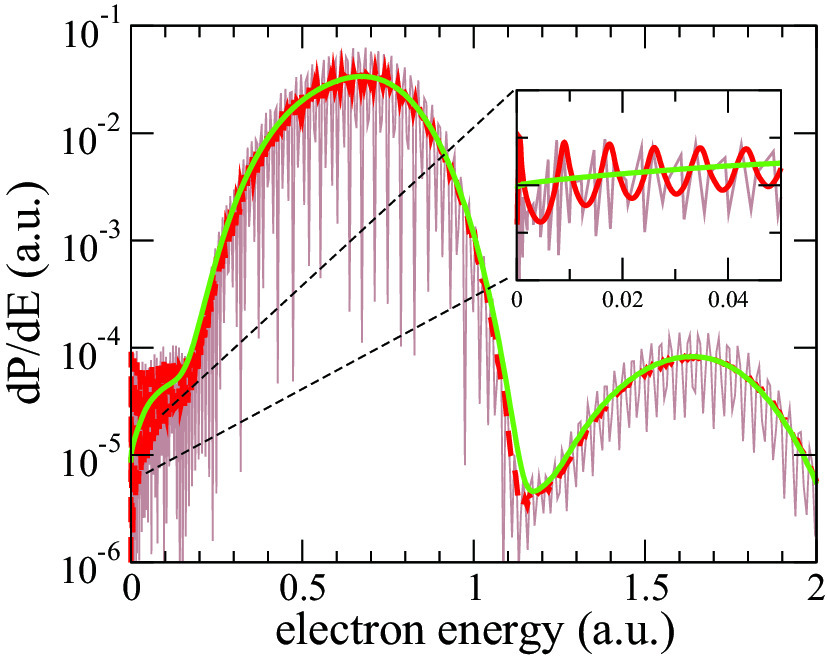https://doi.org/10.1140/epjd/s10053-025-01036-4
Regular Article – Ultraintense and Ultrashort Laser Fields
Elimination of spurious oscillations on photoemission spectra
1
Instituto de Astronomía y Física del Espacio - IAFE (CONICET-UBA), 1428, Buenos Aires, Argentina
2
Facultad de Ciencias Exactas y Naturales, Departamento de Física, Universidad de Buenos Aires, 1428, Buenos Aires, Argentina
3
Universidad de Buenos Aires, Ciclo Básico Común, Buenos Aires, Argentina
Received:
27
April
2025
Accepted:
29
June
2025
Published online:
3
August
2025
We present a method for accurately computing transition probabilities in one-dimensional photoionization problems. Our approach involves solving the time-dependent Schrödinger equation and projecting its solution onto scattering states that satisfy the correct incoming or outgoing boundary conditions. Conventionally, the photoelectron emission spectrum is obtained by projecting the time-evolved wave function onto the stationary continuum eigenstates of the unperturbed, time-independent Hamiltonian. However, when the spatial potential is symmetric, both the initial bound state and the final continuum states exhibit well-defined parity. The propagated wave function retains structural features of the initial bound state, including its parity. As a result, changes in the parity of the continuum states can introduce substantial variations in the projections, leading to spurious oscillations in the computed electron emission spectrum. Our method circumvents this issue by employing scattering states without defined parity. Furthermore, it enables the calculation of directional emission, making it possible to study emission asymmetries. To illustrate the capabilities of our scattering projection method, we analyze the partial differential photoionization probabilities of Al(111) metallic surfaces under short laser pulses at grazing incidence.
Copyright comment Springer Nature or its licensor (e.g. a society or other partner) holds exclusive rights to this article under a publishing agreement with the author(s) or other rightsholder(s); author self-archiving of the accepted manuscript version of this article is solely governed by the terms of such publishing agreement and applicable law.
© The Author(s), under exclusive licence to EDP Sciences, SIF and Springer-Verlag GmbH Germany, part of Springer Nature 2025
Springer Nature or its licensor (e.g. a society or other partner) holds exclusive rights to this article under a publishing agreement with the author(s) or other rightsholder(s); author self-archiving of the accepted manuscript version of this article is solely governed by the terms of such publishing agreement and applicable law.





